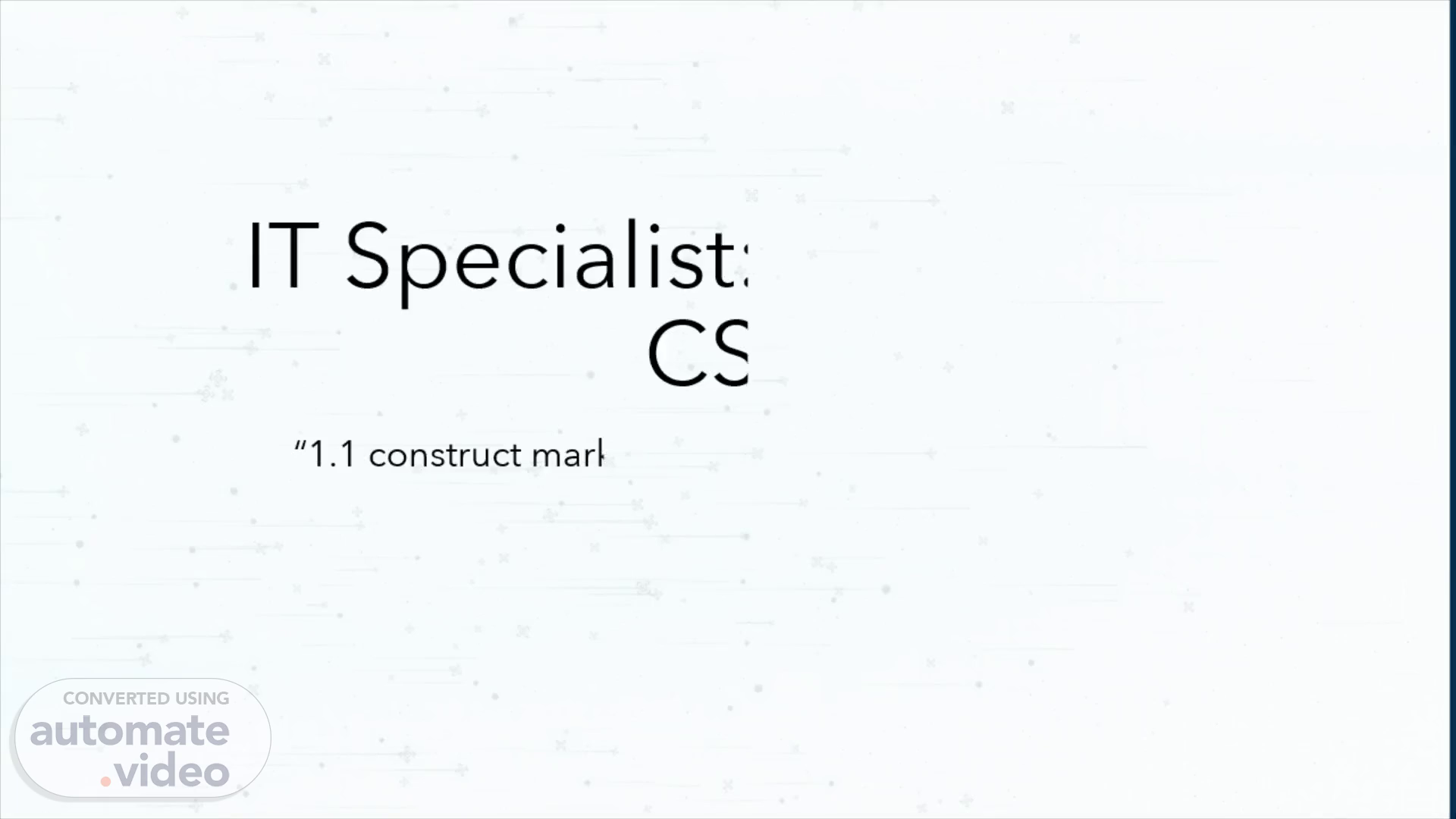
IT Specialist: HTML and CSS
Scene 1 (0s)
IT Specialist: HTML and CSS. “1.1 construct markup that uses metadata elements.”.
Scene 2 (9s)
1.1 Construct markup that uses metadata elements.
Scene 3 (21s)
Metadata elements communicate helpful details about your website..
Scene 4 (39s)
One use of metadata elements is to add dynamic script to a web page..
Scene 5 (56s)
The <noscript> metadata element presents alternative markup (text) to be displayed to users with browsers that do not support scripts or when the user has disabled scripts in their browser..
Scene 6 (1m 12s)
The <style> metadata element defines formatting or style information about other elements of your web page..
Scene 7 (1m 26s)
The <link> metadata element tag defines the link between your document and an external source..
Scene 8 (1m 46s)
The <meta> metadata element tag defines data about data.
Scene 9 (1m 56s)
The Encoding dictates how text is transferred and stored..
Scene 10 (2m 6s)
Using keywords or descriptions in a <meta> tag informs a search engine what topics are included in your website..
Scene 11 (2m 16s)
By defining viewport settings in the meta tag, you are specifying the user’s visible area of a web page..
Scene 12 (2m 32s)
As you present each metadata element, make sure students are clear how each tag can provide important information for a website’s markup..
Scene 13 (2m 50s)
The syntax for the meta tag is different than most tags because they are name/content pairs..
Scene 14 (3m 6s)
Show a snippet of code and an expansion of how it affects the content..
Scene 15 (3m 38s)
The impact of most meta tags are not directly (or easily) seen in the content, which makes them less likely to be used and less likely to be remembered..